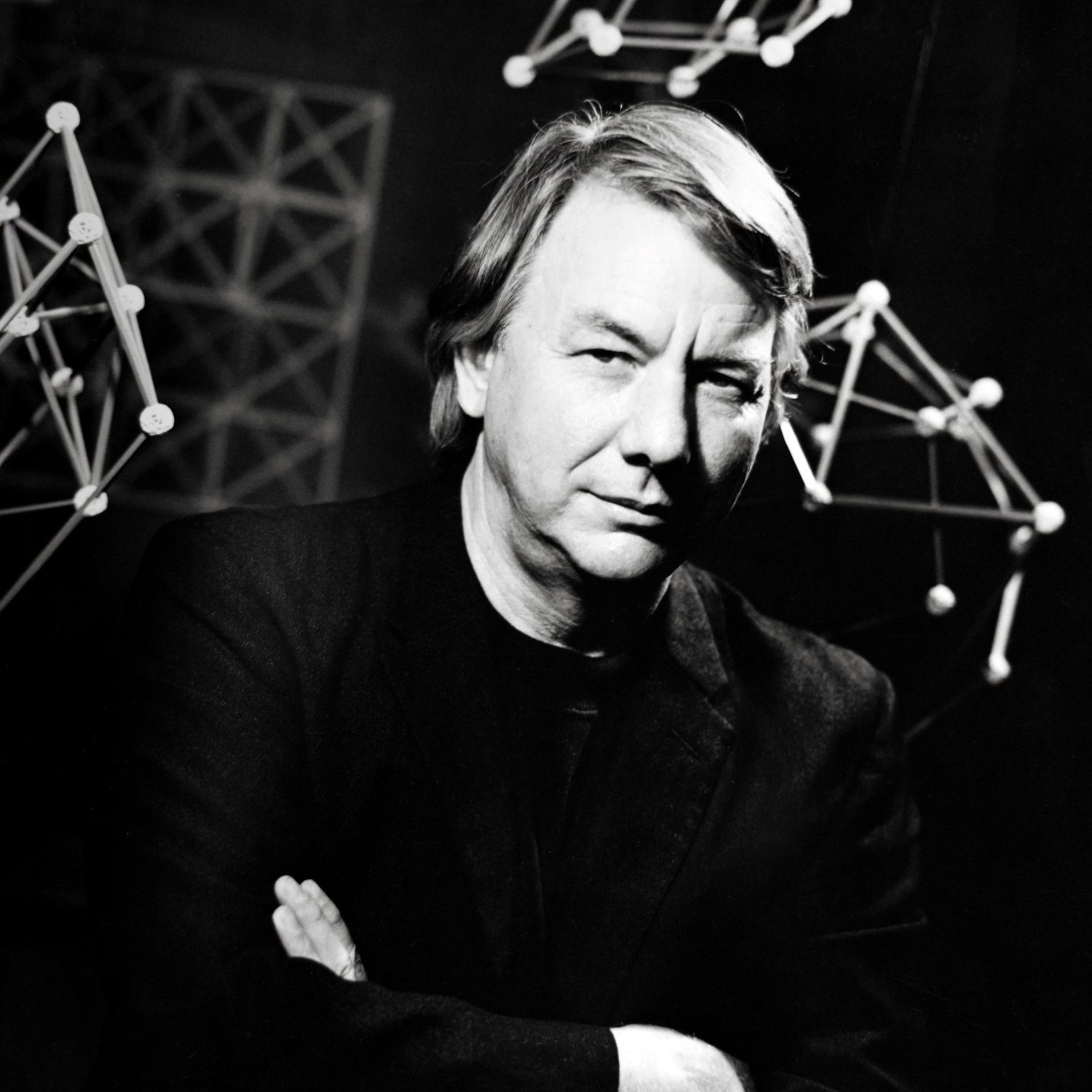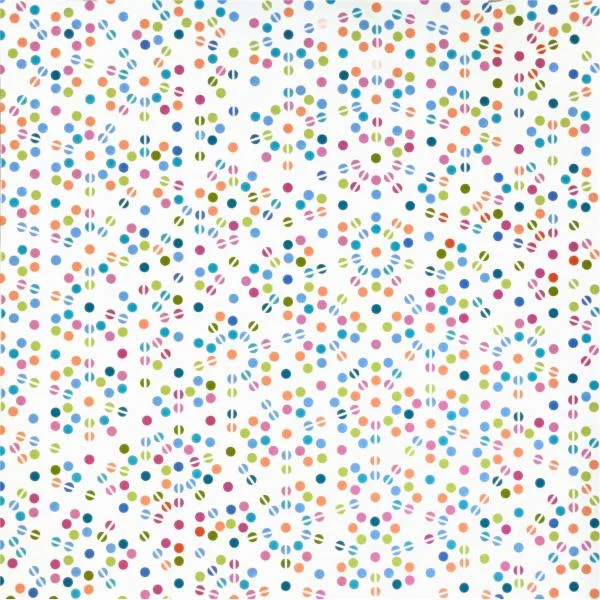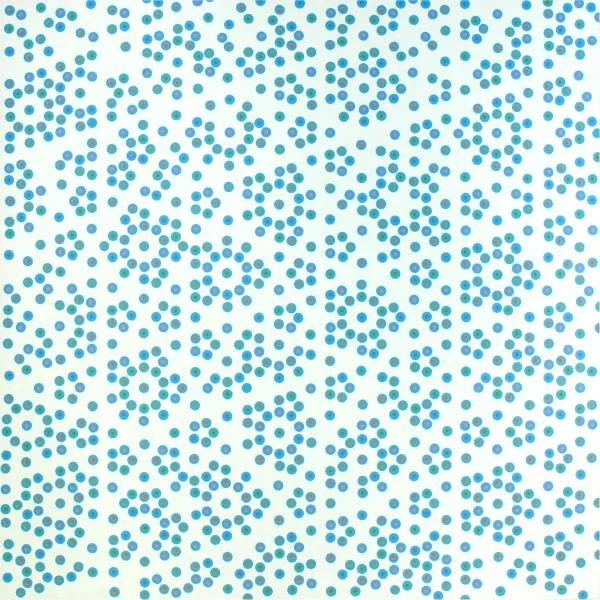The quasi-symmetry series utilizes the 5-fold symmetries that I first started investigating in the mid-60's in Drop City. Since that time, they have recurred frequently in my spatial investigations. I regard these paintings as shadowy expanses from 6-dimensional space (the structural modules having been projected from the triacontahedron on to a plane).
The primary issue being explored here is the structure of space.
Through the esthetic logic I am working with, and implicit in space (being equally extended in each dimension), is the sphere. Inherent in the sphere, by it's structural relationship to the isometric Platonic solids - such as the arrangements of evenly spaced points on their surface, are the triacontahedron and 5-fold symmetry. The non-periodic tessellation that underlies each work in this series, facilitates an interplay and interconnectedness between symmetry and asymmetry, between order and disorder. The deep structure, reflecting 5-fold symmetries, is permeated by relationships in the golden proportion. Implied by 5-fold symmetry is the golden mean.
The Golden Mean (or phi) is one of those mysterious natural numbers, like e or pi, that seem to arise out of the basic structure of reality. Unlike those abstract numbers, however, phi appears regularly in our natural world, in things that grow and unfold in steps, including living things. For instance, plants and trees grow in the phi ratio. Likewise, the nautilus shell and the sunflower spiral in the phi ratio. And in human anatomy, the spinal vertebrae are relative to each other in the golden mean. Leonardo da Vinci understood that humans are constructed in the proportion of phi and that much of the natural world is phi-based. In fact, it was recently discovered that DNA itself incorporates phi proportions in its construction. Viewed from the end of the DNA molecule (or from it's side), the proportion of the golden mean is evident in the molecular structure.















